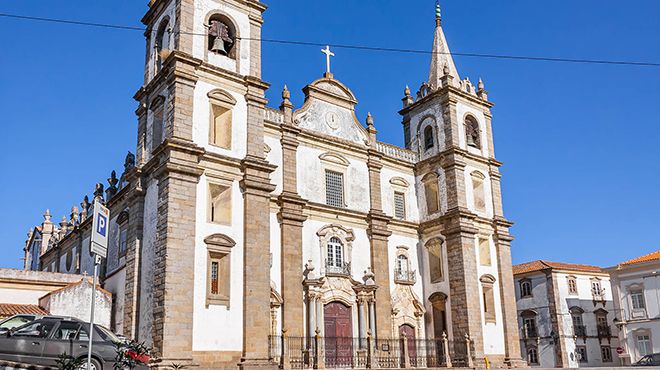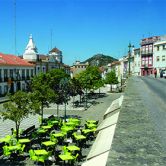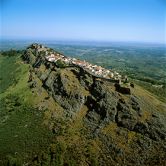Sé Catedral de Portalegre

Monuments
A remarkable collection of Mannerist paintings.
The Diocese of Portalegre was created in the 16th century and its first bishop was D. Julião de Alva, chaplain of D. Catarina, wife of D. João III (1521-57), who ordered the erection of the new Cathedral consecrated to Our Lady of the Assumption. Work begun in 1556 with a project by Afonso Álvares and the last stone, the tip of the vault, was placed in 1575. Designed in a late Renaissance style, the temple underwent alterations between 1737 and 1798, in Baroque style, as can be seen in the stonework on the portico, on the facade and the bell towers.
Inside, lit up by 28 windows, are panels of 16th century tiles and a remarkable set of mannerist paintings, unique in the country. The altarpieces of the high altar and the side chapels display ninety-six paintings, among them several Portuguese artists from the 16th and 17th centuries. To the right of the altar is the Chapel of the Most Holy and to the left, Saint Peter. The pulpits are in marble, as are the railing in front of the main chapel, where the work of the sculptor and carver Gaspar Coelho, and the painters Francisco Venegas, Fernão Gomes and Simão Rodrigues, can be admired. The remaining paintings in the church are attributed to the Portalegre Workshop, Cristovão Vaz from Lisbon, Diogo Teixeira, Pedro Álvares Pereira from Coimbra and the Spanish School.
In the vaults one can admire several grotesque mannerist motifs, cartoons, masks, fleurons, and hybrid beings, probably inspired by the Flemish engravings seen at the time in Europe.
You can also visit the sacristy, clad with 18th century tiles (representing the "Escape to Egypt") and the cloister, completed in the 18th century. To the north is the old Episcopal Palace, which was the bishops' residence until 1910 and is linked internally to the Cathedral.
7300-855 Portalegre






 Explore
Explore 
 Remember and Share
Remember and Share 


